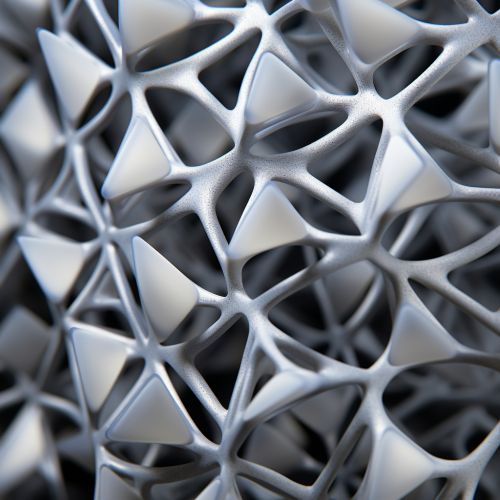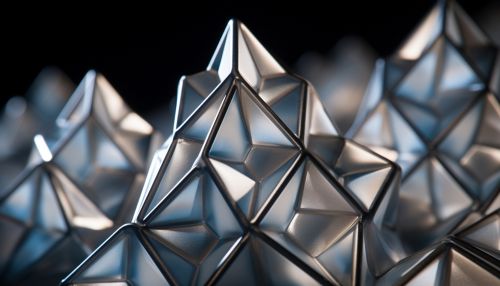Silicate
Introduction
Silicate minerals are the most abundant group of minerals in the Earth's crust, constituting about 90% of it. They are classified based on the structure of their silicate groups, which contain different ratios of silicon and oxygen. Silicates are also important in architecture and industry.
Structure and Composition
Silicate minerals are built from tetrahedral structures, where a silicon atom is surrounded by four oxygen atoms. This structure, known as the silicon-oxygen tetrahedra, is the basic building block of silicate minerals. The tetrahedra can be isolated or grouped together in various ways, forming different types of silicate structures.


Classification
Silicate minerals are classified into several groups based on the arrangement of the silicon-oxygen tetrahedra. These groups include Nesosilicates, Sorosilicates, Cyclosilicates, Inosilicates, Phyllosilicates, and Tectosilicates. Each group has unique properties and occurrences.
Nesosilicates
Nesosilicates, also known as island silicates, are the simplest form of silicate minerals. In these minerals, the silicon-oxygen tetrahedra are isolated and linked by interstitial cations.
Sorosilicates
In Sorosilicates, two silicon-oxygen tetrahedra are joined together, forming a double island structure. This group includes minerals like axinite and epidote.
Cyclosilicates
Cyclosilicates, also known as ring silicates, have their silicon-oxygen tetrahedra arranged in rings. Examples of cyclosilicates include beryl and tourmaline.
Inosilicates
In Inosilicates, the silicon-oxygen tetrahedra are arranged in single or double chains. This group includes minerals like pyroxene and amphibole.
Phyllosilicates
Phyllosilicates, also known as sheet silicates, have their silicon-oxygen tetrahedra arranged in sheets. This group includes minerals like mica and clay minerals.
Tectosilicates
Tectosilicates, also known as framework silicates, have their silicon-oxygen tetrahedra linked in a three-dimensional framework. This group includes minerals like quartz and feldspar.
Properties
Silicate minerals have a wide range of physical and chemical properties due to the different ways the silicon-oxygen tetrahedra can be arranged. These properties include hardness, color, luster, and cleavage.
Uses
Silicate minerals have many uses in various industries. For example, quartz, a type of tectosilicate, is used in the manufacture of glass and ceramics. Clay minerals, which are phyllosilicates, are used in the manufacture of bricks and pottery.
